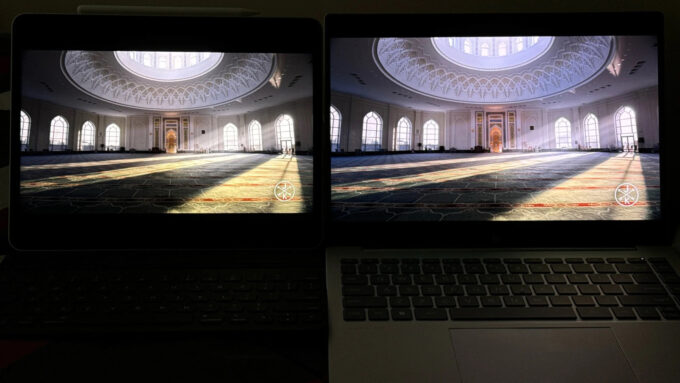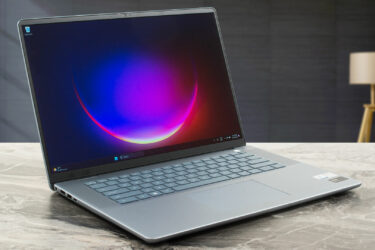OLED’s Successor? A New Era of Cheaper AND Better Displays is Coming

Some years ago, everyone was looking for IPS panels for all their devices, as they outmatched TN panels in every category. Now, everyone is looking for OLED panels, due to their punchy and vibrant colors, deep black colors, high contrast, and overall the best available technology.
So we’ve passed the IPS era, and we’re now into the OLED era.
OLED has become mainstream, and that’s a fact of life, as more TVs, phones, tablets, and laptops come with such bright and vibrant screens.
However, things are shaking up, as even Sony is dumping OLED in favor of Mini LED for their new BRAVIA flagship display. This happened for several reasons:
The first and the most important reason is that MiniLED can reach higher overall brightness of up to 3000 nits which is around 2x or 3x the peak brightness of OLED panels which is much needed in the pursuit of realistic image. Here’s a simple scene from the real life:
You see? Even 3000 nits isn’t enough!
On top of that MiniLED panels can get very close in the “local dimming game”, with more and more mini zones that can be dynamically adjusted. Essentially, you get the same deep black color.
MiniLED panels also don’t suffer from burn-in, which is important for longevity.
As a bonus, MiniLED is cheaper to manufacture than OLED, so companies are saving money from transitioning to MiniLED from OLED.
M1 iPad Pro (Mini LED) on the Left / HP Pavilion Plus 14-ey0000 on the Right
Credit: u/7370657A
Now everyone is looking towards the future and the new pinnacle of display technology. One candidate is QDEL, also referred to as NanoLED, among tons of other names.
QDEL – What is it and how soon can we have it
QDEL is short for quantum dot electroluminescent. Translate that into human language, it’s a quantum dot that can be lit up on its own, without the need of a backlight. This eliminates another layer when making displays, thus making for a cheaper manufacturing cost, as well as thinner and more efficient panels. The costs are further driven down, as the manufacturing process for QDEL is pretty similar to how LCD-LED displays are made, so there’s no need to figure out a new process and build it from scratch.
A typical QDEL panel consists of a cathode and an anode layer, with a quantum dot pixel layer in between.
Each pixel has three subpixels, with a blue one, a red one, and a green one (you see where we’re going with this). As electricity passes through these quantum dots, they light up the three subpixels in a particular way depending on what color needs to be displayed. Multiply that by a few million, and you get a whole display.
As the QDEL pixels make their own light, they can be turned off, thus delivering the same deep black colors and infinite contrast as OLED.
By directly utilizing quantum dot pixels, NanoLED research companies believe that we can reach even wider color gamuts as well as higher color accuracy. As the pixels are inorganic, rather than the organic diodes inside OLED screens, longevity should be better once everything is figured out (bye-bye OLED burn-in).
Manufacturers implement a lot of measures against burn-in but many OLED users still report such issues
As for challenges before QDEL, finding proper materials is a big one. For example, Blue and Green quantum dots wear out quite quickly, leading to an overall reduction in lifespan. Finding new compounds for the quantum dots will require R&D, as well as plenty of trial and error, however, as more companies invest in the research, the higher the chance of finding such compounds and bringing QDEL screens closer to our homes.
The main opponent to QDEL is MicroLED, which is super expensive right now. MicroLED already has the same contrast ratio as OLED, which is around 1,000,000:1. It also has the benefit of being around 30 times brighter. One can only imagine the HDR benefits that we’d be able to achieve using MicroLED panels, once they become easier to manufacture and more readily available. You need around 20 to 30 thousand nits of brightness to make an image truly lifelike using HDR.
In the images below you can see how local dimming and high-brightness display can elevate HDR quality and bring forth lifelike experience straight to your screen.
Imagine Indiana Jones walking through a dark temple looking for his next artifact. He lights up a torch that he finds nearby. The scene can still be super dark with the local dimming zones pumping out just a few nits of luminance, while the flaming torch can be as bright as 10,000 nits, looking like a real torch. It would be as if you were exploring the temple.
With current mainstream technology, you can’t find a 10,000-nit light source in any display. However, with the right advancements, QDEL can become the new flagship technology for displays.
Our colleagues at LM Labs probably can’t wait to test out this new tech, meanwhile, you can read more about what they do, namely, improve laptop screens (and monitors for that matter) with our Display Profiles.












